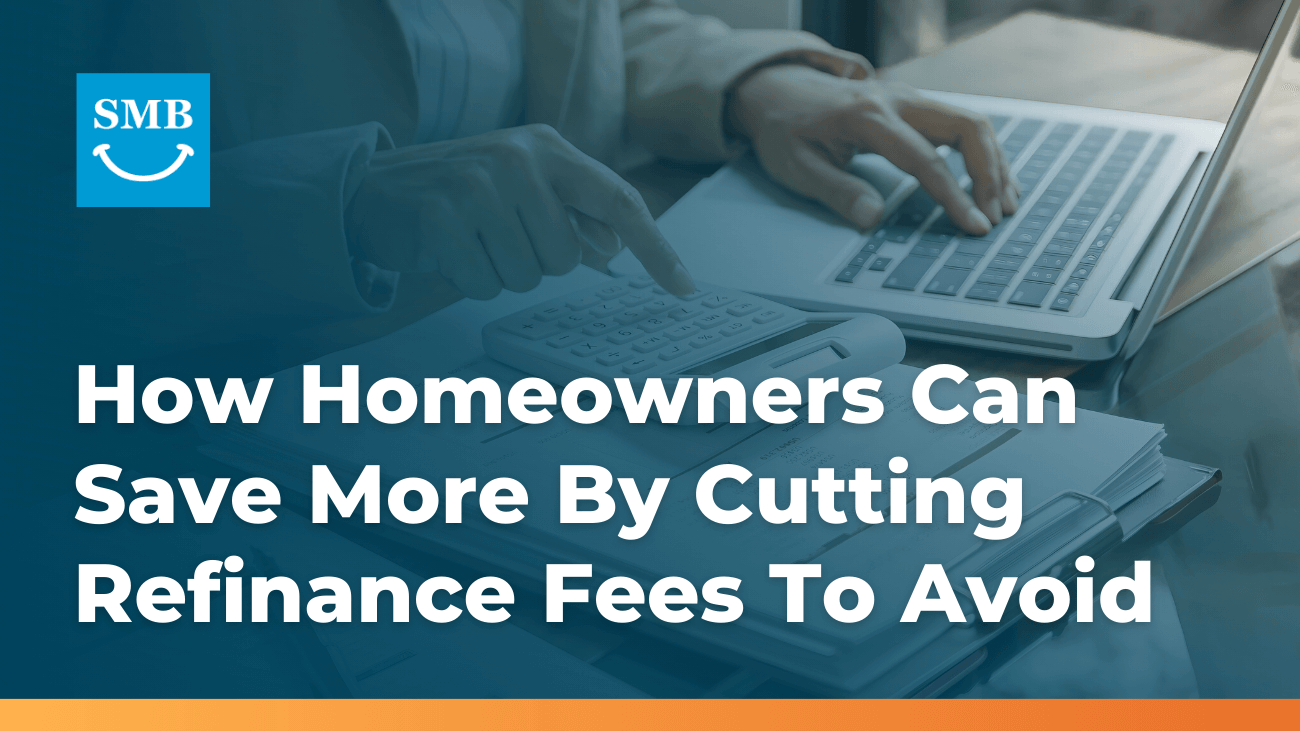A Complete Guide to Refinancing Your Home Loan

The average interest rates for 15 and 10-year fixed refinance continue to trend downward. Right now, it's a great time to discover how refinance options can help you. Refinancing is a smart choice for a number of scenarios and for long-term investments.
Jump-start a new business, consolidate debt and take advantage of market conditions. Sitting on one of your greatest assets and not leveraging its value is the last thing you want to do. Conservative advice from parents, or those who've never owned a home is not always the best.
If you plan ahead and do everything right, you can get a great return from refinancing a mortgage. Let this mortgage guide help dispel any myths and bring to light what happens during refinancing.
This is sound advice that any investor or real estate agent will give you.
Reasons to Refinance Your Mortage
The most common goal of debt refinancing is to apply for a new loan with better terms. First-time homebuyers often start out with imperfect credit, so their goal should be to achieve excellent credit as soon as possible. This will in-turn improve your score once you secure a better loan.
The same goes for mortgages with adjustable rate plans. It is in your best interest to refinance and lock in a lower fixed interest rate. Those who already have good credit, refinancing can still make sense if interest rates have dropped since purchasing and/or the homes value has increased.
Another good reason to refinance is canceling the insurance premium on a Conventional or an FHA loan. PMI costs less per month if your credit score is 720 or higher, so you can save a lot by refinancing after building your credit.
Besides the data of the raw numbers, divorce is another common reason to refinance. Even if you're still on good terms, it's much easier for both parties to refinance and start over with only one name on the mortgage.
Types of Refinancing Plans
There are three common types of refinancing plans to choose from. In addition to these three types are two refinance scenarios for special cases. For those looking to refinance their loan to update the interest rate or repayment terms, there's rate-and-term refinancing.
Leveraging your home's value to refinance into a bigger loan that you can receive cash from is called a cash-out. This is commonly done to clear off debt or make major renovations to an older home. The opposite type of refinancing involves dumping more money into a new mortgage with a lower rate/shorter term.
Outside of these three common types of plans, you have HELOC loans and Underwater refinancing. HELOC involves adding a second mortgage. This type of refinancing can also provide additional financial security after acquiring better loan terms.
Homeowners who are underwater (owing more than the home's value) on their mortgage also have refinancing options. If the loan is under Fannie Mae or Freddie Mac, you may be eligible for a lower, fixed-rate mortgage with shorter terms.
Whichever type of refinancing plan you opt for, make sure you do your homework and know the true value of your home. Before applying, get an idea of what your home is worth, check your credit, and have all financial reports ready. Factor in any additional closing costs and application fees with your local mortgage broker.
Refinance Calculators and Cost Assessment
The terms of your new mortgage agreement won't be known until everything is finalized. You can still get a fairly accurate estimate with the help of a mortgage broker. The more information they have, the easier it is for them to calculate your offers.
Ask the essential questions for determining mortgage terms and fees associated with closing. They will utilize a refinance calculator, which takes all your financial information into account, as well as market rates. This is important to determine your break-even point, which is your total costs in relation to your monthly savings.
Your mortgage broker can help you understand what it will take and how long it will be until your savings break even with your refinancing expenses. Will the upfront investment outweigh the amount of time it takes to recoup and start profiting?
Qualifying and Applying for Refinancing
Moving forward, when you've determined that refinancing is right for your financial needs, it's time to prepare for qualification. Getting pre-qualified is ideal, as it will speed up the filing process. A mortgage broker can help you find the best lenders to get the lowest terms.
Because your credit score matters so much when applying for refinancing, have all your pre-qualifications ready to apply within the same week. This will minimize the hit that those credit checks will make during your billing cycle. Have all your prospective lenders lined up for applications.
Your mortgage lender will need a recent W2 and paystub, two months of bank statements and Driver’s License; and if you are self employed you’ll need two years of tax returns and a P&L to show your income is stable for the current year. The more information when qualifying, the better your chances are at getting accurate quotes.
After a lender has determined your qualifications, they will send a Loan Estimate, including terms, agreements, and closing costs. This happens within 1-3 business days of receiving your application. You can use each estimate to leverage offers from other lenders.
Once your refinance plan has been approved, it will take up to 30 days to process and close the deal. During this time, they may require a home appraisal and a credit check during underwriting.
Mortgage Guide Checklist
Refer to this checklist throughout the refinancing process. This will help assist you with getting all your ducks in a row and protect you from pressure sales tactics.
Have a Goal and Stick to It
Refinancing should come with a desired outcome. That outcome should result in you being in a predicted position, more than a general financial improvement. You should never agree to longer loan terms if you don't know what you position will look like after signing.
Know Your Value
It is important to stay current with both your credit score and home's market value. These are your bargaining chips at the negotiating table. The better you understand your credit score, the more you can potentially improve your mortgage terms and rates.
Also, when looking up your home's value, do research for your neighborhood's sales history. This will indicate whether your home's projected value is higher or lower than the current appraisal. Click here for a free property valuation report.
Compare Rates
If you have a mortgage broker, they can quickly shop around for the best rates. This is important because time is of the essence. The time it takes to compare rates and submit loan applications will allow you to reduce the impact on your score.
Closing Costs and Fees
Comparing lenders and closing costs are paramount. Collecting loan estimates will help you determine whether the fees and closing costs outweigh the lowest terms. It's not uncommon for lenders to hide their costs in the fine print.
These include application and processing fees, appraisal fee, origination, underwriting fees, title and insurance background research, tax transfers, and documentation fees. Some lenders will also back-end all of these costs and advertise it as having "no hidden fees".
The fees aren't showing, but the overall cost of the loan is higher, most likely with a higher interest rate.
Filing Paperwork
In the digital era, it's not always easy to gather all our financial documents. It is in your best interest to get everything organized and in a single location, for refinancing. This makes it easier for you and your broker to nail down your financial profile.
This will allow you to lock down your potential rates without any delays in the underwriting process. Your mortgage broker will also know when and how to negotiate based on the Loan Estimates you have received.
Ready with Cash in Hand
Have cash on hand. There are likely to be property taxes and insurance, closing costs and other expenses to pay at closing, so be sure to set aside enough to cover them. Again, it’s listed in your loan estimate, so there should be no surprises. In some cases, these costs can be added to the mortgage balance, which, on the one hand, limits your upfront costs but, on the other, increases what you owe on your home.
Get a Mortgage Broker
This mortgage guide to refinancing is a good reference when starting out. Ultimately, you're going to want to speak with a professional to go over your options. They can help you go over what can benefit your financial situation the most and keep you from jumping into a risky investment.
It's also ideal to have someone on your side who knows the true value of your home. If you can get all the applications and research out of the way early, it will greatly reduce the amount of time it takes to refinance. This means less pressure to commit to deals that may not have your best interest in mind.
Speak to an experienced Seattle mortgage broker today and get an honest look at your home's value.


The Ultimate Guide to the Best Suburbs of Seattle

Should You Use a Mortgage Broker? Everything You Need to Know First

How to Find the Right Neighborhoods in Seattle for Your Budget and Lifestyle

Warrantable vs. Non-Warrantable Condos: What Every Buyer Needs to Know Before Financing

How Much Does It Cost to Refinance a Mortgage in Seattle? A Homeowner’s Guide
.png)
How Often Can You Refinance Your Home?
.png)
The Complete Guide to For Sale By Owner (FSBO) in Seattle

10 Questions Every Seattle First-Time Home Buyer Asks

Ultimate Seattle Mortgage Loan Documents Checklist

Your Complete Guide to Seattle Property Tax

Why You Should Work with a Mortgage Broker

Where to Find the Best Local Mortgage Broker

Where Are The Best Places To Live In Seattle?

What’s the Best Way to Save Money for a House in Seattle?

When is the Best Time to Refinance a Home?

What is the Jumbo Loan Limit in Seattle 2020?

What You Need to Buy a House in Seattle

What Is a Jumbo Loan and will you need one when moving to Seattle?

What is the Jumbo Loan Limit in Seattle?

What Is A Non-Warrantable Condo?

What is the Best Down Payment Amount on a House in Seattle?

What is PMI Mortgage Insurance? And Why It Is Not As Bad As You Think

What Is A Cash-Out Refinance?

What do Home Loan Underwriters Look For?

What Down Payment Do I Need for a House?

What Are The Costs of Buying a Home?

What Are The Best Neighborhoods In Seattle For Families?

FAQ: What Are the VA Home Loan Requirements?

WEST SEATTLE JUNCTION ; Seattle Neighborhood Tour

What are RSUs and How to Spend Them

Understanding Mortgage Down Payments

Top 5 Seattle Suburbs to Buy In 2021

Understanding Down Payments in Seattle

The Ultimate Mortgage Document Checklist

Top 10 Mortgage Questions You Should Ask Your Broker

The Worst First-Time Homebuyer Mistakes

The Top 5 Seattle Suburbs for 2020

The Best Seattle Neighborhoods in 2020

How to Find the Best Mortgage Refinance Companies in Seattle

The Best Seattle Neighborhoods for Families

The Best Neighborhoods in Seattle to Buy a Home

The 7 Best Seattle Suburbs for Families

Seattle Neighborhood Guide: The Top 10 Most Affordable Places To Live In Seattle

SOUTH LAKE UNION ; Seattle Neighborhood Tour

Seattle Summer Housing Market Guide 2020

Seattle Housing Market Update 2020

Seattle Housing Market Hacks

Save Money When Buying a House in Seattle

Save Money on Your Mortgage Refinance

Moving to Seattle with a Family? Here's the BEST Suburbs For You!

Refinancing To Reduce Your Bills and Increase Available Cash

Neighborhoods in Seattle to Buy a Home 2020

Real Estate Trends in Seattle

Mortgage Down Payments in Seattle

MAGNOLIA ; Seattle Neighborhood Tour

Mistakes to Avoid with Cash-Out Refinance

How to Refinance Your Home in 9 Steps

Jumbo Loan Limit vs Conforming Loan Limit in Seattle for 2021

KIRKLAND ; Seattle Neighborhood Tour

Jumbo Loan Limit in Seattle for 2021

ISSAQUAH ; Seattle Neighborhood Tour

Is My Credit Score Good Enough to Buy a House?

How to Buy a House; Home Buying 101

How to Lower Your Monthly Mortgage Payment

How to Get the Best Rate for Your Home Loan

How to Buy a House for Less

How Much Home Can I Buy in Seattle?

How Much Do You Really Need for a Down Payment in Seattle?

How Much Home Can I Afford?

Home Price Forecast for Seattle 2020

How Hot is the Seattle Real Estate Market?

How Hot is the Seattle Real Estate Market in 2022?

Home Inspection Questions You Need to Ask

Do You Need a Realtor to Buy a House in Seattle?

FHA vs. Conventional Loan: Which Mortgage Is Right for You?

Find the Best Mortgage Lender for Your Home Loan

Federal Housing Administration Loans 2021

Down Payment Requirements in Seattle

FACTORIA and SOMERSET ; Bellevue Neighborhood Tour

Everything you Need to Know About Seattle Jumbo Mortgages

Everything You Need to Know About VA Loans

Advice To A First Time Home Buyer: Down Payment Assistance Programs Exist for Millennials

CROSSROADS ; Bellevue Neighborhood Tour

Down Payment 101: How Much Money Do I Need to Buy a House?

COVID-19 Mortgage Help for Homeowners

Comparing ARM vs. Fixed Rate Mortgage

Can I Afford To Buy A Home In Seattle?

Choosing the Best Lenders for Home Loans

How to Use Restricted Stock Units to Buy a Home in Seattle

ARM v. Fixed Mortgage: Which is Right For You?

Ballard or Queen Anne? The Best Neighborhoods of Seattle to Buy a House

Avoiding the Worst Seattle Mortgage Lenders

Are You Buying a House in Seattle? Here’s the Ultimate Survival Guide

Fixed vs. Adjustable Rate Mortgage: How Today’s Buyers Can Make A Smarter Choice

ALKI BEACH ;; A Seattle Neighborhood Tour

A Complete Guide to Refinancing Your Home Loan

8 Ways to Lower Your Mortgage Payment

8 Mistakes to AVOID When Mortgage Loan Refinancing


















